12 Ways To Add Flavor To Chicken Wings
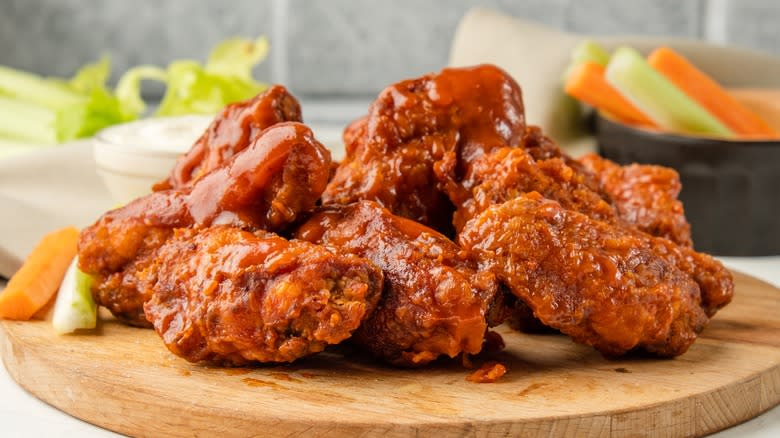
Chicken wings are the beloved appetizer of tailgates, parties, and bonfires. They can be elevated with multi-day marinades, brining, smoking, and saucing. They can be baked with nothing more than the simple yet beloved Buffalo sauce -- a concoction of hot sauce and butter -- and still be a crowd-pleaser.
This humble cut of poultry is synonymous with a good time, but incorrectly flavoring, cooking, or under-seasoning your chicken wings can lead to a gummy, soggy, bland mouthful and tarnish your reputation as a party host. People may reach more for the celery and carrots instead of the underflavored wings you've presented.
When choosing how to elevate your chicken wings, thinking outside the box in terms of seasoning may be your best bet. Everything from dry dressing mixes to soda to buttermilk can coax deep flavor out of these three-bite snacks, as can more scientific methods like pouring boiling water over the raw wings or double-frying. Here, we've rounded up 12 of the best ways to add flavor to your chicken wings.
Read more: 26 Best Toppings To Add To Your Chicken Sandwich
Using Drink Powders
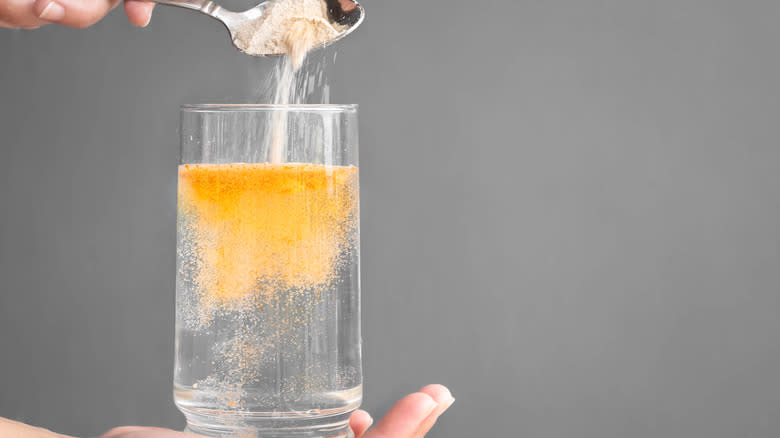
Surprisingly, you can utilize that dry packet of Tang for something other than a big jug of bright orange juice. Touted in the 90s as "a kick in a glass" (the jingle living as a core memory in many of our minds), the astronaut drink's powder provides a citrusy kick for wings that's both delicious and unexpected. When using it as a dry rub on your chicken wings, the Tang actually helps to tenderize the meat while keeping the outside crispy, thanks to its sugar content.
When using a drink powder to flavor your chicken wings, you should first think carefully about its pairing. Tang is largely orange and citrus flavored, so using other ingredients that pair well -- like thyme, ginger, garlic, and chilies -- can give your wings a sweet and spicy heat. You can also go a jerk route and blend with pre-made jerk seasoning or create your own with cinnamon, allspice, salt, pepper, smoked paprika, thyme, garlic, and onion. Whatever your Tang-y dry rub, mix it together in a bowl, then coat raw, patted-dry wings all over to form a delicious spice crust. Arrange on a plate and chill in the fridge for about four hours before moving on to baking or frying.
Make A Brine
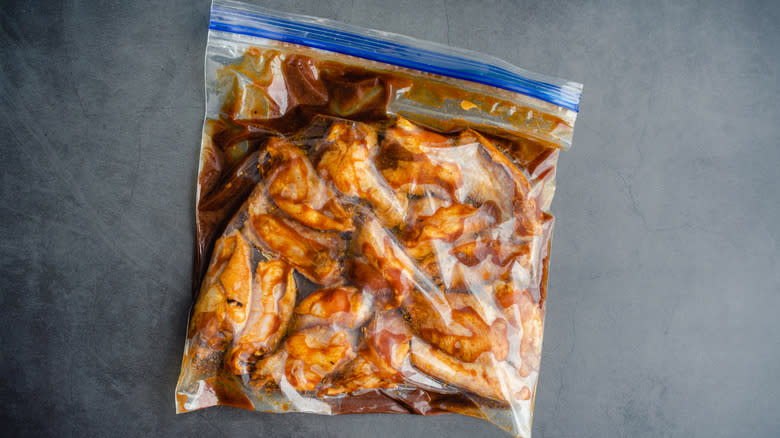
There's no time like brine time when it comes to most poultry, and chicken wings are no exception. The act of brining, for the uninitiated, imparts deep flavor for tender, juicy chicken wings by soaking said wings in a concoction of acid, salt, and spice for hours -- sometimes days. Many brining solutions are as simple as one cup of salt to every gallon of water, while some folks add peppercorns, bay leaves, halved citrus fruits, garlic, and other spices to the mixture. Either way, the solution draws salt and water into whatever meat is submerged, resulting in moist, seasoned meat with enough water to stay juicy even during high-temperature cooking.
For a beginner's brine for wings, get your biggest stock pot and fill it with a mixture of water and kosher salt -- remember one gallon of water to one cup of salt; the mixture should be enough to cover your wings fully. Bring the mixture to a boil until the salt is completely dissolved, then add a handful of whole black peppercorns, a few bay leaves, about a third of a cup of sugar, a couple tablespoons of apple cider vinegar, and red pepper flakes. Simmer for about ten minutes until everything is incorporated, then cool to room temperature before adding in your wings. The wings should sit in the brine for 24 hours in the refrigerator. When they're ready, take them out, dry them off, and continue on with your wing culinary adventure.
Create A Dry Rub
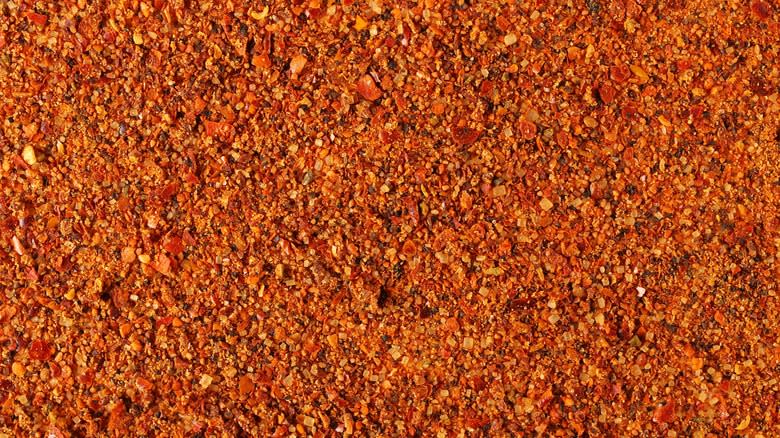
There are plenty of reasons why you should be using dry rub for your chicken wings. The number one reason, naturally, is to incorporate deep flavor ahead of actual cooking. Dry rubs are just fancy spice mixtures rubbed onto your raw chicken wings and left to soak into the skin, a much shorter exercise in flavoring than marinades or brines. So, for those of us short on time but craving a big, tasty experience, this could be the way to go. It should be noted that a dry rub won't really flavor the inside of your chicken wing the way a brine or marinade promises. Instead, it'll help you develop a crispy, flavor-packed crust, which sounds better anyway.
For the beginner, a great and fool-proof dry rub for a dozen chicken wings can consist of a few tablespoons of brown sugar, a tablespoon of baking powder, a tablespoon of smoked paprika, a tablespoon of chipotle chili powder, a teaspoon of garlic powder, a teaspoon of onion powder, a teaspoon of kosher salt, and a teaspoon of freshly cracked black pepper. Mix everything, add to a bag, and toss in your raw chicken wings. Shake until they're all evenly coated, and let sit for about 20 to 30 minutes until you're ready to cook your wings.
Sauce Or Marinate With Soda
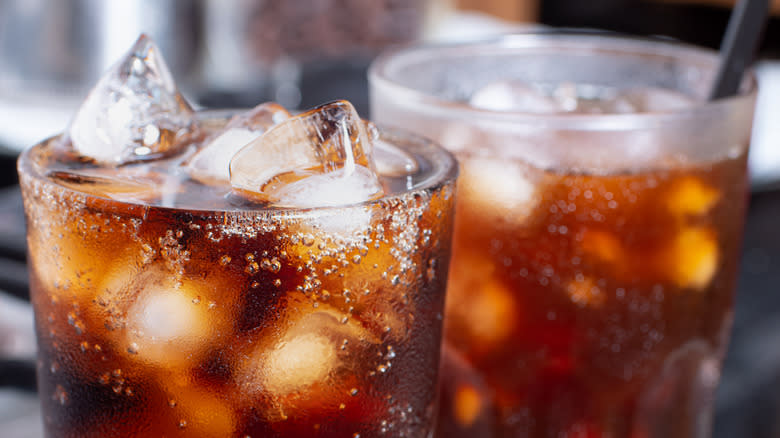
Yes, it's true: Diet Coke could be the key to taking your wings up a notch. If you're a saucy wing fan, you've likely had your share of sweet and spicy wings, and that's exactly the sort of flavor that Coca-Cola can impart. According to Red House Spice, a sauce using cans of Coca-Cola, soy sauce, Shaoxing rice wine, scallions, ginger, and Chinese aromatics like star anise and cinnamon is cooked until the liquid is greatly reduced, then cooled and used to coat cooked wings.
If you don't have Coca-Cola on hand, you can utilize Pepsi with little to no difference in taste. If you're feeling especially daring, try root beer, Cheerwine, or even Dr. Pepper for an even sweeter kick. The high sugar content in any of these canned beverages will reduce and help make your chicken wings sticky and sweet in the same way a really finger-lickin' barbecue sauce would.
Pour Boiling Water Over The Raw Wings
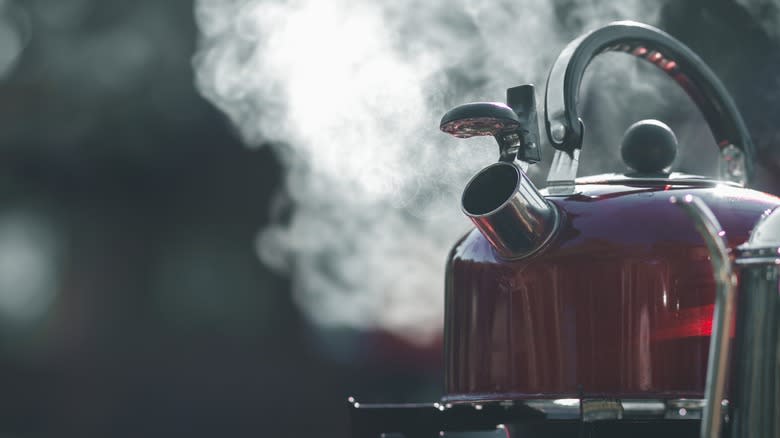
Part of the key to great flavor in your wings is having a crisp bite full of flavor, and prime crispiness can be achieved by pouring boiling water over your chicken wings. By pouring boiling water over raw wings, the skin contracts and tightens, allowing the fat to begin to render and dissolve, leaving you with thinner skin and juicy meat. After pouring boiling water over them, wings can be cooked in whichever way you prefer -- frying, roasting, baking, or grilling. Just ensure that they've been dried off after their hot water bath.
If you are going with the boiling water method to impart some crispiness, brining beforehand to impart flavor without washing it away is a good option. The meat of brined wings will be tender and juicy thanks to the salty soak, so there's no danger of wings drying out once the fat is rendered out. Dry rubs could also be used after the boiling water is applied, and you could then bake or roast your wings.
Add Vinegar
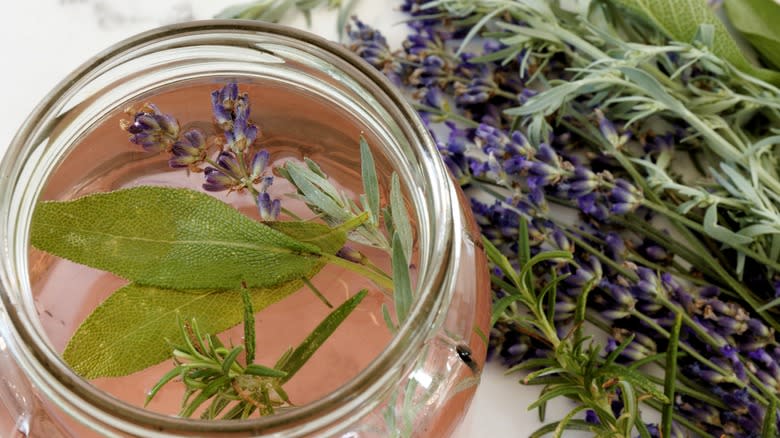
If you've been known to inhale half a bag of salt and vinegar potato chips in one sitting, then adding vinegar to your chicken wings could be the right move. While there are plenty of sweet, savory, and spicy marinades you could put on your wings, using a good deal of vinegar can be the difference between a mediocre favored appetizer and one that takes you straight to wing paradise. Think about any salty, fried food you've ever had: Adding a splash of malt vinegar livens up the flavor and adds a delightful, zingy bite. Marinating wings in vinegar does the same without making them too overbearing.
Make your marinade with a mixture of distilled white vinegar, apple cider vinegar, sugar, salt, pepper, garlic powder, and dry ranch seasoning. Add raw wings and let them marinade overnight or at least for a couple of hours. Remove from the marinade, dry them off with a paper towel, then bake or fry as desired.
Use Beer, Wine, Or Liquor
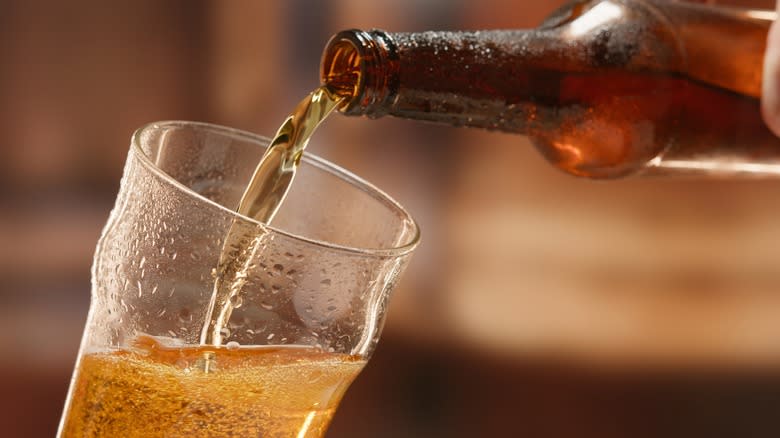
Using up that can of beer, that wine you weren't a fan of, or that liquor your mom got you in an upcoming wing recipe could impart deep, interesting flavor you may not have otherwise been able to replicate. Most of us are no strangers to beer batters for things like fried fish and even chicken, but using it on your wings is a delightful and unexpected twist. The beer's bubbles, malt flavor, and yeast add something special that a regular fry batter simply doesn't. Using white wine in a marinade can impart a citrusy, light bite while keeping chicken wings juicy, and the alcohol will cook out. Certain liquors can be used for marinades and finishing sauces, like a bourbon maple glaze or a gin-infused marinade with lots of herbs and spices.
If you're really thinking outside the box, you could try marinating in a more flavorful cordial like limoncello. The citrusy brightness paired with fresh lemons, oranges, thyme, and spices in a marinade is a great step in prepping your chicken wings. Once they're out of the marinade, you can coat the wings in a dry rub of lemon pepper, salt, paprika, and herbs for a fresh, light take on the usually messy and saucy snacks.
Marinate In Buttermilk
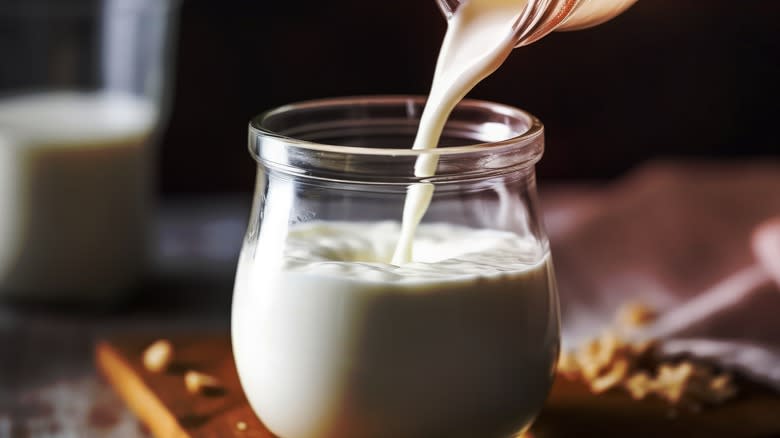
Fried chicken aficionados have long sworn by the powers of buttermilk in a marinade. First, the acidity of the buttermilk helps to tenderize the chicken, retaining the meat's juiciness while softening some of the muscle fibers -- extremely helpful in a chicken wing, which can be sinewy and tough in spots. Buttermilk also sticks to and coats the chicken better than some other marinating liquids, allowing the bird to stay moist even after it's been pulled out of its flavor bath.
So, contrary to popular belief, the sauce is not the most important part of your fried chicken wings; it's the work beforehand -- like the buttermilk brine.
For an easy buttermilk brine, combine buttermilk with pickle juice, paprika, salt, pepper, and chili powder until all combined. The easiest way to combine chicken and brine is in a giant Ziploc bag, so add in your patted-dry raw chicken wings, brine, and seal the bag. Give the bag a few shakes, then lay it flat in a 9x13 baking pan and refrigerate for at least a few hours and up to a day. When ready, remove the wings from the buttermilk mixture and place them on a wire rack. Discard the remaining brine. Wings can be grilled, roasted, or baked from here, and you're welcome to add more spice as desired.
Fry Them Twice
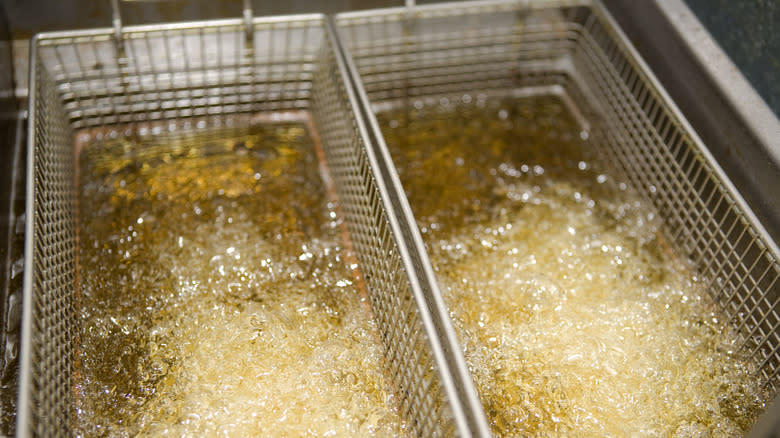
Wings, so nice; you fry them twice. Seriously, though, double frying chicken wings -- or food in general -- isn't anything new and is an easy chicken wing hack you probably wish you knew sooner. French fries are frequently fried twice to achieve a solid outer surface, preserving the inner creaminess, then fried again for a crisp bite. Chicken wings are no different. By frying twice, you're achieving two important things: The first fry allows you to actually cook the chicken since the temperature of the oil is going to permeate directly into the meat and bring it up to that 165 F you're looking for. The second time you lower the chicken wings into the fryer, the skin itself will start to get really, really crispy, locking in the dry rub or marinade you've used.
The crispy Korean fried chicken recipe explains the process. Wings are prepped with a dry rub only, then cooked in oil that's around 375 F for around 10 minutes. Before the second fry, the wings are removed from the oil and left to rest for long enough that they cool off before being lowered into oil that's back at 375 F. They're cooked until they're crispy and golden, then removed and cooled until it's time to give them a sauce bath.
Use Cornstarch In Your Dry Rub
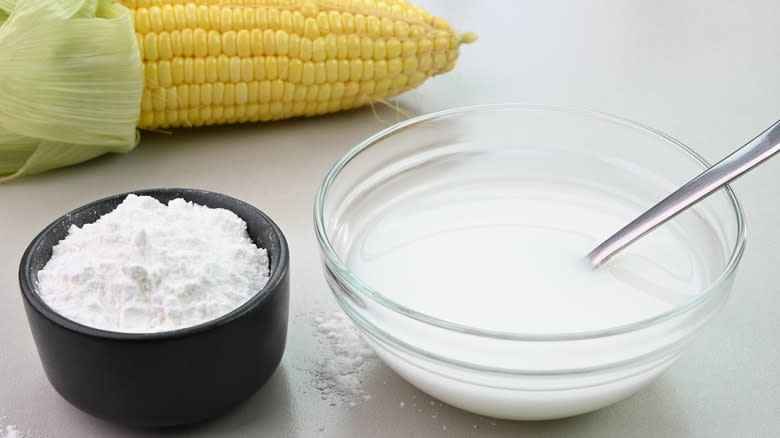
No matter how you're saucing or cooking your chicken wings, one thing you should be adding to the first layer of dry rub is cornstarch. Adding cornstarch to your dry rub actually helps to prevent gluten development, which is helpful if your coating contains any sort of flour. It can also help to prevent too much moisture from being absorbed into the coating, which leads to a less crunchy, less flavorful, and more soggy mess that may slide right off your wings.
For a simple way to start using cornstarch in your chicken wing recipe, start with equal parts all-purpose flour and cornstarch in a large bowl. Add in kosher salt, freshly cracked black pepper, garlic powder, onion powder, and smoked paprika. Mix everything together, then add in raw, patted-dry chicken wings and coat thoroughly. Remove from the mixture and back on a rack in the oven at 425 F for about 35 minutes, or until the wings' internal temperature is 165 F. Remove, and enjoy as is or douse in classic Buffalo sauce.
Use Baking Soda In Your Dry Rub
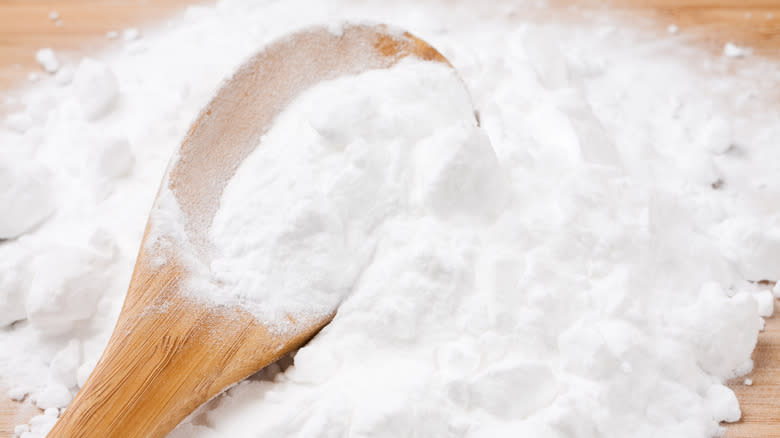
Like cornstarch, adding baking soda to your dry rub can greatly increase the crispiness of your chicken wings, helping lock in the flavor from your seasonings while adding that much-desired crunch. When used in a dry rub, baking soda's alkalinity raises the chicken's pH level, breaking down fats and peptides in the chicken skin. Once that happens, the skin can brown much faster, producing a crispier result. The baking soda also produces tiny bubbles when it touches the moist wings -- a surprise to none of us who have ever used it to clean literally anything. Once the bubbles start, they actually get stuck in the chicken skin, blowing it up a bit, thinning it out, and creating a shatteringly crisp bite.
If you need to try out the baking soda hack for crunchy chicken wings to see what all the fuss is about, start out with a simple rub of baking soda plus basic seasoning. Perhaps a premade jerk seasoning or garam masala mixture to get a little exotic? Use equal parts and enough that your wings will be well coated. After the coating is patted dry, let the wings sit in the refrigerator for a couple of hours before baking or frying.
Use The Powder From Your Box Of Mac And Cheese
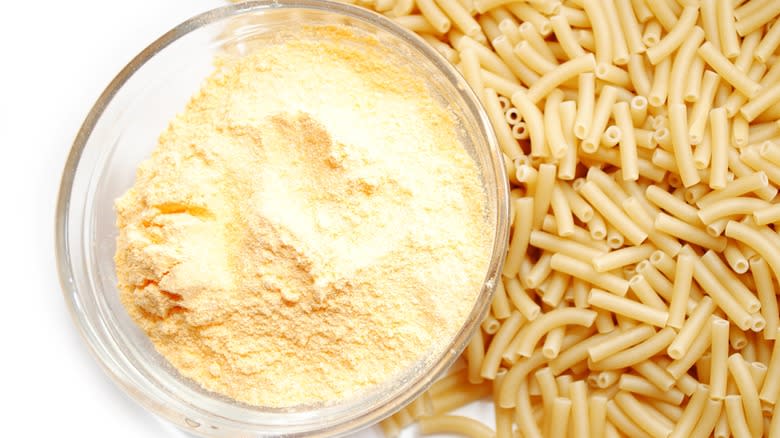
If, for whatever reason, you have the macaroni and cheese powder but are out of the noodles (we're looking at you, toddler parents), you can actually put that cheesy dried goodness to good use. The cheddar cheese powder, which contains actual cheese, is made to dissolve in milk or water, so it's best to use it in a dry application for your wings.
First, you could use the powder as you would a Parmesan, mixing it with breadcrumbs for a crunchy, crispy coating on your wings. You could do a typical breading assembly line here: Dipping dry, raw wings in seasoned flour, then egg wash, then the cheese powder mixture (don't forget to add baking soda or cornstarch for crunch). Let wings rest, then bake or fry as desired.
Second, you could use the cheese powder in a cheesy finishing sauce. Once your wings are fried, baked, or grilled and cooked, create a cheesy sauce with the cheese powder, melted butter, freshly chopped scallions, and fresh black pepper. Toss in hot, crispy wings and enjoy.
Read the original article on Tasting Table.

